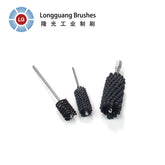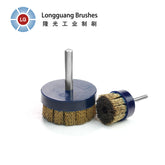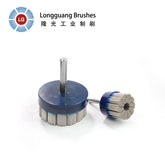Strategies for Cross Hole Deburring
When it comes to precision machining, one of the critical processes is cross hole deburring. This process involves removing burrs and sharp edges from cross-drilled holes to ensure the final product meets quality standards. To achieve optimal results, experts recommend implementing specific strategies for cross hole deburring.
Understanding the Importance of Cross Hole Deburring
Cross hole deburring is essential in precision machining as it helps improve the functionality and aesthetics of the final product. Burrs left behind in cross-drilled holes can lead to issues such as poor assembly, reduced part performance, and even safety hazards. By effectively deburring cross holes, manufacturers can enhance the overall quality of their products.
Utilizing Specialized Deburring Tools
One of the most effective strategies for cross hole deburring is using specialized deburring tools designed for this specific task. These tools are equipped to reach the interior of cross-drilled holes and remove burrs without causing damage to the surrounding surfaces. By investing in high-quality deburring tools, manufacturers can achieve consistent and precise results.
Implementing Proper Deburring Techniques
Another crucial aspect of cross hole deburring is the implementation of proper deburring techniques. It is essential to follow the recommended procedures for deburring to ensure thorough removal of burrs and uniform edge finishing. Techniques such as manual deburring, abrasive blasting, and thermal deburring can be employed based on the material and hole size.
Quality Control and Inspection
Quality control is paramount in cross hole deburring to verify that the process has been completed successfully. Inspection methods such as visual inspection, tactile inspection, and advanced imaging techniques can be used to check for any remaining burrs or imperfections. By conducting thorough quality control checks, manufacturers can guarantee the integrity of the deburring process.
Automation for Efficiency
To enhance efficiency and consistency in cross hole deburring, manufacturers can consider implementing automation solutions. Automated deburring systems can streamline the process, reduce cycle times, and minimize human error. By integrating automation into the deburring process, manufacturers can achieve higher productivity and cost-effectiveness.
By incorporating these strategies into their cross hole deburring process, manufacturers can ensure the production of high-quality, burr-free components for various industries such as aerospace, automotive, and medical. Effective deburring not only improves the functionality of the final product but also enhances its overall aesthetic appeal.









